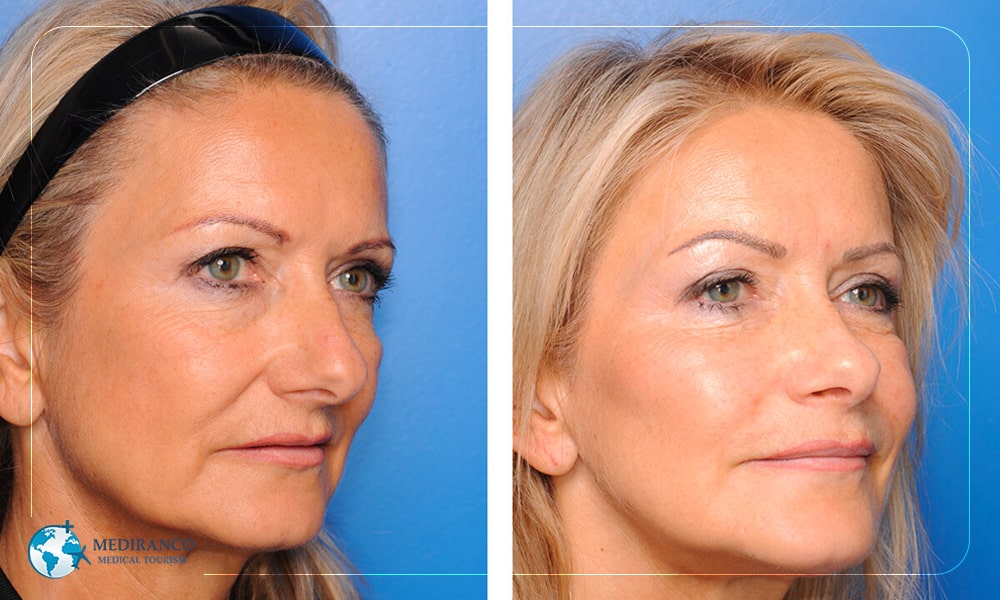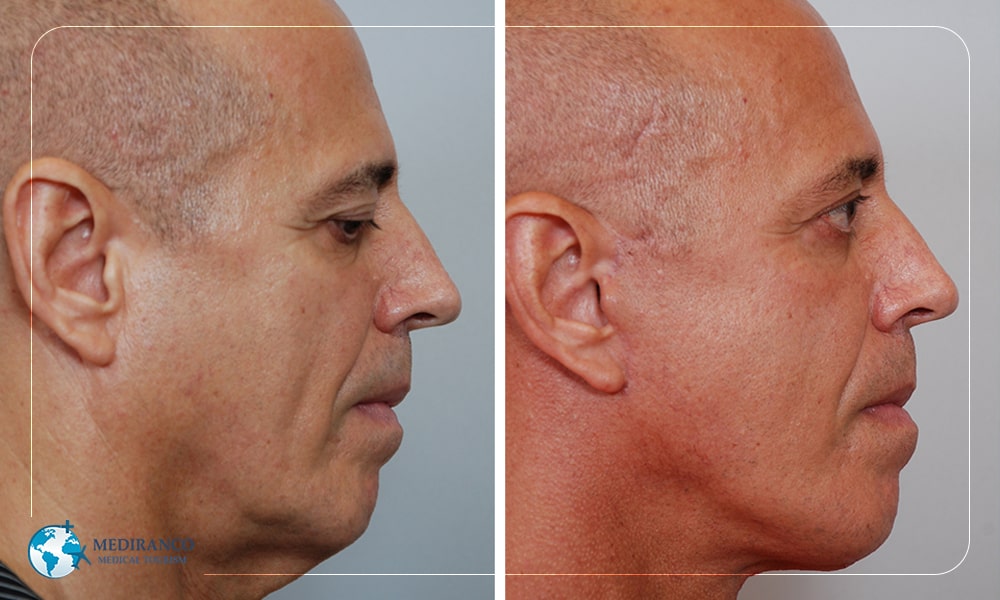Facelift myths debunked: Facelifts are a popular cosmetic procedure designed to improve the signs of aging in the face and neck. However, like many medical procedures, facelifts are often surrounded by myths and misconceptions. It’s important to separate fact from fiction when considering a facelift.
Table of Contents
ToggleHere are some common facelift myths debunked:
- Facelifts are only for the elderly
- Facelifts look unnatural
- Facelifts are only about tightening the skin
- Facelifts are painful and require a long recovery
- Facelifts are only for women
- Facelift results last forever
- Non-surgical treatments can replace facelifts
Facelifts are only for the elderly
Facelifts are not exclusively for the elderly. While facelifts are often associated with older individuals seeking to address the signs of aging, they are not limited to a specific age group. The suitability of a facelift is determined by individual factors, including one’s unique anatomy, skin quality, and aesthetic goals.
Younger individuals may also opt for facelift procedures for various reasons, such as addressing genetic factors, early signs of aging, or specific concerns related to their facial appearance. Some people in their 40s or even younger may consider facelifts if they have significant sagging or loose skin.
It’s essential to consult with a board-certified plastic surgeon to discuss your specific concerns and goals. They can evaluate your facial characteristics and recommend the most appropriate treatment plan, whether it’s a facelift or another cosmetic procedure, based on your individual needs. The decision to undergo a facelift should be based on a thorough assessment and discussion with a qualified medical professional rather than age alone.
Facelifts look unnatural – (Facelift myths debunked)
Facelifts do not inherently result in unnatural-looking outcomes. In fact, modern facelift techniques aim for more natural and subtle results. The perception that facelifts make individuals appear “unnatural” is often associated with outdated or poorly executed procedures.
The key to achieving a natural-looking facelift lies in the surgical technique and the skill of the plastic surgeon. A skilled and experienced surgeon will take several factors into account:
- Tissue manipulation: Modern facelift techniques involve not only tightening the skin but also repositioning and restoring underlying facial tissues, such as muscles and fat. This approach helps create a more youthful and balanced facial contour.
- Individualized treatment: Every patient’s facial structure and aging process are unique. A successful facelift is tailored to the specific needs and goals of each individual to maintain their natural features.
- Avoiding excessive tension: Over-tightening the skin can lead to the “windblown” or unnatural appearance that some people associate with facelifts. Skilled surgeons aim for a more relaxed and refreshed look.
- Minimizing scarring: Advances in surgical techniques have made it possible to minimize scarring, making the results of a facelift less obvious.
- Balanced and gradual improvement: Rather than attempting dramatic transformations, a good facelift seeks to provide a gradual and balanced improvement that respects the patient’s unique facial aesthetics.
It’s important to research and choose a board-certified plastic surgeon with extensive experience in facelift procedures. A thorough consultation with the surgeon should involve a discussion of your goals, expectations, and a review of before-and-after photos of their previous work. This will help ensure that you are on the same page and that the surgeon understands your desire for a natural-looking outcome. When performed by a skilled surgeon, facelifts can produce results that enhance your appearance while maintaining a natural and harmonious look.
Facelifts are only about tightening the skin – (Facelift myths debunked)

Facelifts are not solely about tightening the skin; they involve more comprehensive procedures than that. While skin tightening is one component of a facelift, the surgery addresses multiple layers of facial tissues, including muscles and fat, to achieve a more youthful and natural appearance.
Here’s what a facelift typically entails:
- Skin Tightening: Yes, one aspect of a facelift is to tighten the skin. However, this is just the outermost layer of the procedure. Excess skin is carefully trimmed and repositioned to reduce sagging and wrinkles.
- Muscle Repositioning: Underlying facial muscles may be repositioned or tightened during a facelift. This helps restore a firmer foundation for the skin and creates a more youthful facial contour.
- Fat Redistribution: The surgeon may redistribute or sculpt facial fat to address volume loss and achieve a more balanced facial appearance.
- Incision Placement: Incisions are typically made in discreet locations, such as along the hairline, around the ear, or under the chin. These incisions allow the surgeon access to the deeper layers of tissue.
- Sutures: The surgeon uses sutures to secure and support the repositioned tissues. These sutures help maintain the new facial contours.
- Removal of Excess Skin: Any excess skin is carefully trimmed away to create a smoother and more rejuvenated appearance.
- Incision Closure: After the necessary adjustments are made, the incisions are closed with sutures or staples. These incisions will heal over time, and the scars should fade with proper care.
It’s important to note that the exact techniques used during a facelift can vary depending on the patient’s specific needs and goals, as well as the surgeon’s preferred approach. The goal of a facelift is to address multiple aspects of facial aging, including skin laxity, muscle changes, and volume loss, to create a more harmonious and youthful appearance. Therefore, it’s not solely about tightening the skin but rather a comprehensive approach to facial rejuvenation.
Facelifts are painful and require a long recovery – (Facelift myths debunked)
Facelifts are surgical procedures that typically involve some degree of discomfort during the recovery period, but they are not excessively painful for most patients. The level of pain experienced varies from person to person, with factors like individual pain tolerance, the extent of the facelift, and the surgeon’s techniques playing a role. Surgeons use local anesthesia with sedation or general anesthesia during the procedure to minimize pain, and patients are prescribed pain medications to manage post-operative discomfort.
Regarding recovery, while it does involve some downtime, it is not necessarily long. Most patients can resume normal daily activities within a couple of weeks. Swelling and bruising are common in the initial days after surgery but gradually subside. Patients are advised to avoid strenuous activities for a few weeks to ensure proper healing. While some residual swelling and minor discomfort may persist, these typically improve over time.
It’s essential to follow the surgeon’s post-operative instructions, attend follow-up appointments, and communicate openly about any concerns to optimize the recovery process. While facelifts require some patience during recovery, many individuals find that the rejuvenating results are well worth the temporary discomfort and downtime.
Facelifts are only for women – (Facelift myths debunked)

Facelifts aren’t gender-exclusive; they benefit both men and women. While women historically dominated cosmetic procedures, the landscape has evolved. More men now seek facelifts to combat aging, refine facial contours, and boost self-esteem. Facelift techniques are adaptable to individual needs, addressing concerns like sagging skin, wrinkles, and loss of definition.
Board-certified plastic surgeons personalize facelifts for all genders. It’s crucial to consult with a qualified surgeon to discuss unique goals and options. In essence, facelifts aren’t confined by gender, catering to anyone wishing to rejuvenate their appearance.
Facelift results last forever – (Facelift myths debunked
Facelift results are long-lasting but not permanent. While a facelift can significantly turn back the clock on facial aging and provide enduring benefits, the aging process continues over time. Several factors contribute to how long the results of a facelift last:
1. Aging
2. Genetics
3. Lifestyle
4. Quality of the Initial Surgery
While facelift results are not permanent, they can last for many years. On average, patients can expect results to last between 5 to 10 years or even longer. To prolong the benefits of a facelift, some individuals choose to have complementary procedures or non-surgical treatments, such as dermal fillers or Botox, to maintain a youthful appearance. Regular consultations with a board-certified plastic surgeon can help you determine when additional procedures or maintenance treatments may be appropriate to extend the longevity of your facelift results.
Non-surgical treatments can replace facelifts – (Facelift myths debunked)
Non-surgical treatments, such as Botox, dermal fillers, and laser therapy, can provide temporary improvements in facial appearance, but they are not a direct replacement for a facelift. These non-surgical options are often referred to as “minimally invasive” or “lunchtime” procedures because they typically involve less downtime and fewer risks compared to surgical facelifts. However, they have limitations and cannot achieve the same level of results as a facelift. Here’s why:
1. Different Goals:
Non-surgical treatments primarily address specific concerns like wrinkles, fine lines, and volume loss. Facelifts, on the other hand, are designed to comprehensively address sagging skin, loose muscles, and significant facial aging.
2. Temporary Results:
Non-surgical treatments provide temporary results that may last several months to a couple of years, depending on the treatment. In contrast, a facelift provides longer-lasting and more significant rejuvenation.
3. Extent of Improvement:
Facelifts offer more substantial and dramatic improvement in facial appearance. They can restore a more youthful facial contour, while non-surgical treatments offer more subtle enhancements.
4. Age and Severity:
Non-surgical treatments are typically better suited for individuals with mild to moderate signs of aging, while facelifts are recommended for those with more advanced concerns.
In many cases, non-surgical treatments can complement the results of a facelift or be used for maintenance after surgery. The choice between surgical and non-surgical approaches depends on individual goals, the extent of aging, and the desired outcomes. Consulting with a board-certified plastic surgeon can help determine the most suitable treatment plan for your specific needs.
Final words about facelift myths debunked
Consulting a medical professional before undergoing a facelift is crucial for several reasons. First and foremost, a qualified surgeon can assess your individual needs, health history, and aesthetic goals to determine if a facelift is the right procedure for you. They can discuss the potential risks and benefits, help manage your expectations, and tailor the surgery to achieve natural-looking results. Additionally, a skilled surgeon can guide you through the pre-operative and post-operative processes, ensuring you are well-prepared for the procedure and have a smooth recovery. Ultimately, consulting with a medical professional is essential to make informed decisions and prioritize your safety and satisfaction. We at Mediranco, are 24/7 ready to help you with your concerns about the procedure of facelift in Iran.

